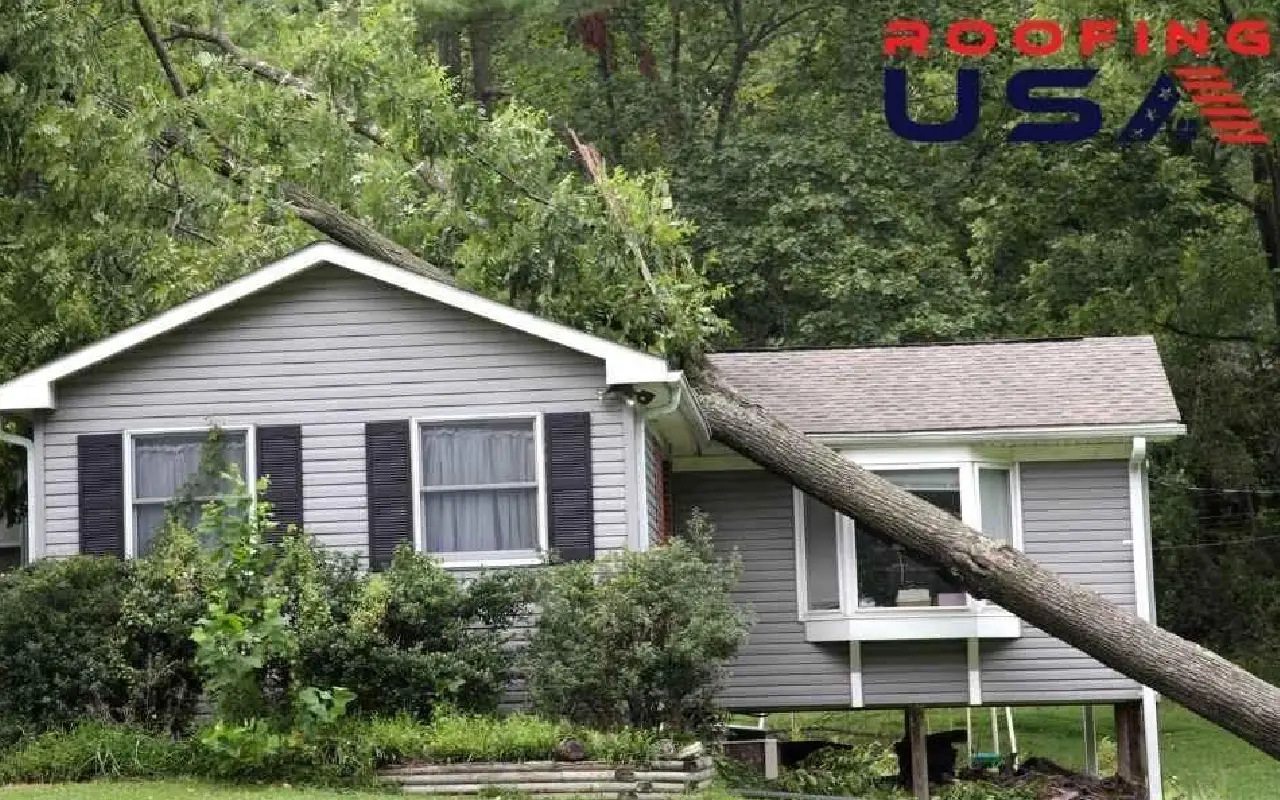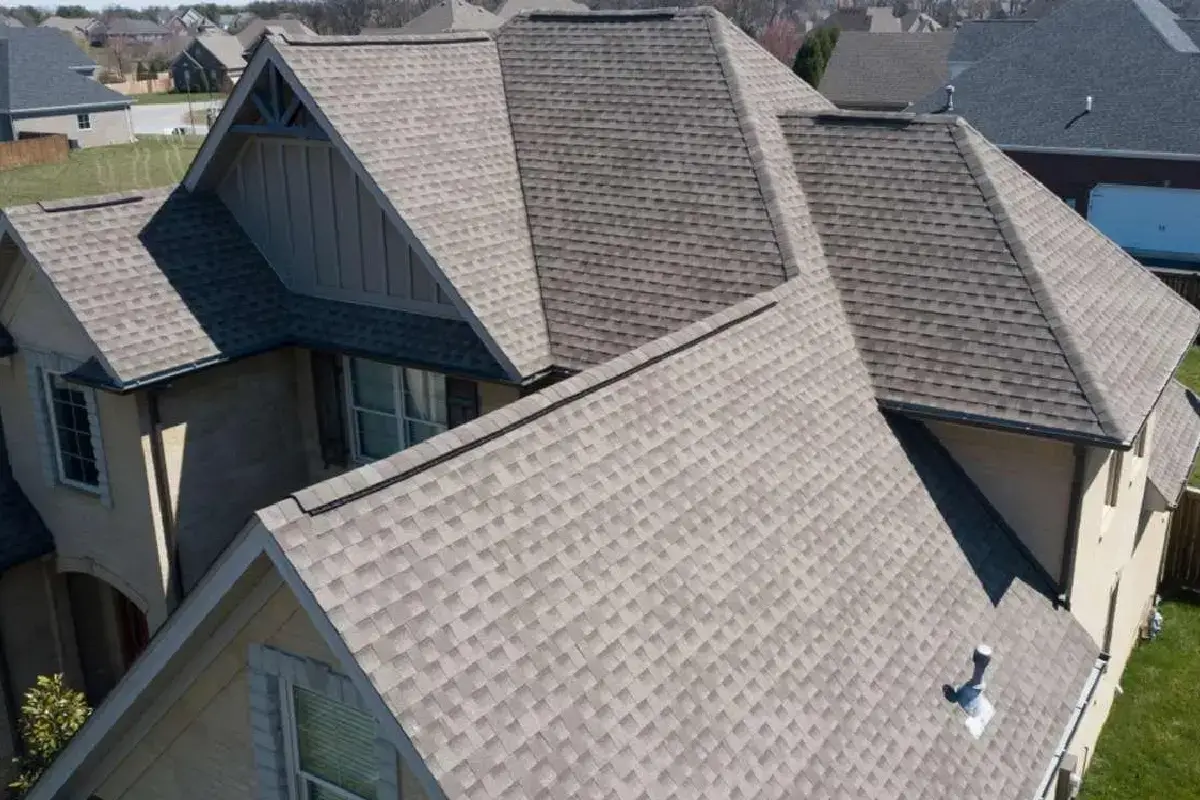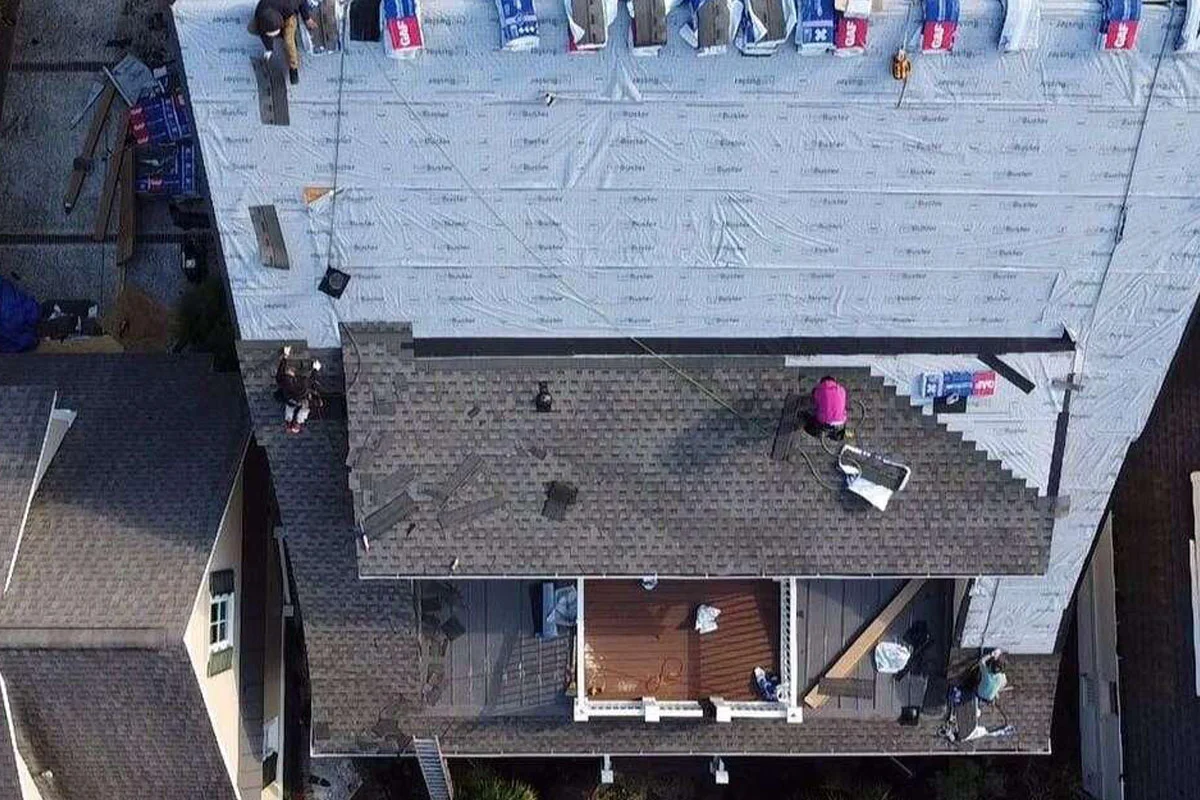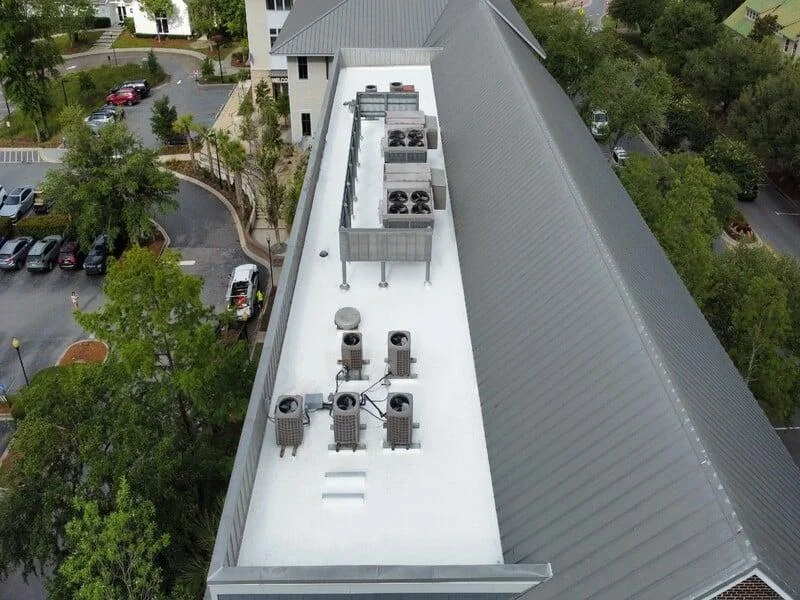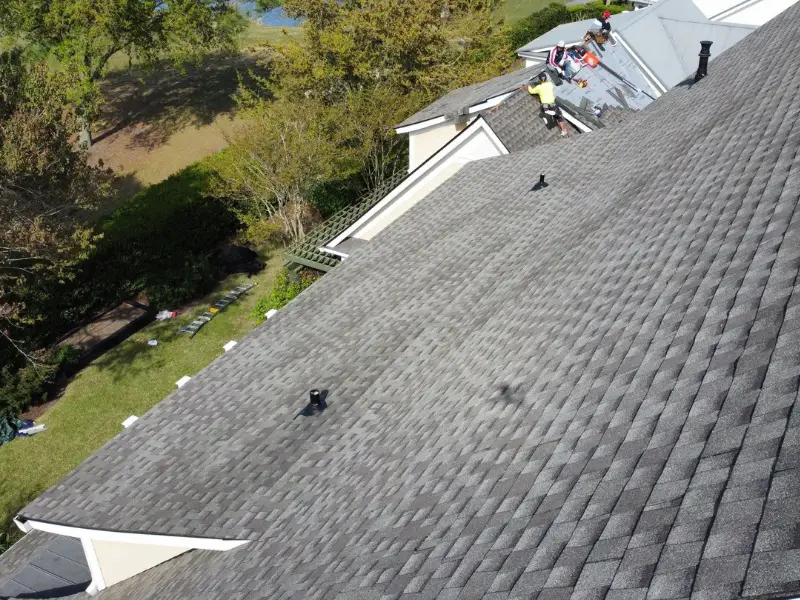As homeowners, we often focus on the aesthetics and comfort of our living spaces. However, with natural disasters like storms, our focus becomes durability and protection. One of the critical areas that need our attention is our roofs. A sturdy roof not only protects us from harsh weather but also enhances our property value.
In this blog, our team at Roofing USA will discuss innovation in the roofing industry and essential tips that will extend the life and durability of your roof and protect your home. With these insights, you’ll be better prepared for future storms.
If You Want to Extend the Life of Your Roof it Must be Durable
When you are in the process of building or renovating your roof, carefully consider the long-term cost benefits. Investing in a durable and high-quality roof may require a higher upfront investment, but it will ultimately save you a significant amount of money in the future.
A durable roof not only minimizes the need for frequent repairs and replacements, but it also provides a strong defense against potential water damage, moisture, and mold, protecting the interior of your home and ensuring a healthy living environment for you and your family.
Additionally, a sturdy and well-maintained roof can enhance the overall value of your property, making it more attractive to potential buyers and increasing the return on your investment.Taking these factors into account when making decisions about your roof will ensure that you are making a wise and informed choice that will benefit you in the long run.
Innovative Roofing Technologies
Innovation in the roofing industry has made significant strides in recent years, reflecting the growing desire of homeowners for sustainability. Advanced roofing technologies have given rise to eco-friendly roofing materials that not only provide superior protection and longevity but also contribute to energy efficiency and environmental sustainability.
New roofing technologies, such as cool roofs , reflective coatings, and energy-efficient materials, can help enhance your roof’s sustainability and save you money on energy bills.
Cool Roofs
Cool roofs are specifically designed to combat the heat by reflecting sunlight and minimizing heat absorption. By utilizing materials with high solar reflectance, cool roofs help to keep buildings cooler, reduce energy consumption, and lower the demand for air conditioning.This helps create a more comfortable indoor environment and contributes to reducing the urban heat island effect and decreasing greenhouse gas emissions.
Reflective Coatings
Reflective coatings protect against UV damage, which can cause roof deterioration. They work by reflecting a significant amount of the sun’s rays, reducing the amount of heat that is absorbed by the roof. This helps to keep the roof cooler, which can result in energy savings and increased comfort inside the building.
One disadvantage of reflective coatings is that they may require regular roof maintenance and reapplication to maintain their effectiveness . However, the benefits of UV protection and energy efficiency generally outweigh this drawback.
Energy-Efficient Materials
Energy-efficient materials, such as durable metal and clay tiles, are designed to withstand the elements while effectively reducing energy consumption. These innovative materials are specifically engineered to provide long-lasting protection against harsh weather conditions, ensuring a sustainable and eco-friendly solution for your building needs.
By utilizing these advanced materials, you can not only enhance the durability and resilience of your structure but also contribute to a greener and more energy-efficient future.

Roof Design Considerations for Storm Resistance
When designing your roof for optimal storm protection, incorporating aerodynamic features, proper drainage, and wind-deflection shapes can go a long way in safeguarding your home.
Aerodynamic features, such as specially designed wind-resistant tiles, ridges, and eaves, are specifically engineered to minimize the impact of strong winds on your roof. These features work together to create a streamlined profile that helps reduce wind pressure and uplift forces.
Ensuring proper drainage designs is another critical aspect of storm-ready roof design. By incorporating effective drainage systems , you can prevent water pooling and potential damage caused by excessive water accumulation during heavy rainfall.
This not only helps to maintain the structural integrity of your roof but also mitigates the risk of leaks and water-related issues.
In addition to aerodynamic features and proper drainage, the choice of roof shapes can also play a significant role in enhancing storm resistance. Gable and hip roofs, for example, are well-known for their ability to deflect both wind and debris. The sloping angles and overhanging eaves of these roof shapes help redirect wind flow and prevent debris from accumulating on the roof surface.
By incorporating these wind-deflecting roof shapes into your design, you can add a layer of defense against storms.
Sealing and Waterproofing: A Shield Against Water Damage
Sealing and waterproofing your roof are crucial steps in protecting your home from water damage. These processes ensure that your roof is impervious to leaks and capable of withstanding heavy rainfall, providing an extra layer of safeguard against storms.
Best Practices for Roof Flashing
Roof flashing is a crucial part of any roof design, acting as a barrier against water intrusion at intersections and joints.Here are some best practices to consider:
- Use Correct Materials: Copper, lead-coated copper, and stainless steel are commonly used materials that offer excellent longevity. The material you choose should be compatible with other materials used on the roof to prevent corrosion.
- Ensure Proper Overlapping: Overlapping is a critical aspect of flashing. The pieces of flashing should be installed so that water flows over the joints, not into them.
- Secure Flashing Correctly: Flashing should be firmly secured but not overly tight. Expansion and contraction are common due to temperature changes, so there should be enough flexibility to allow movement.
- Regular Inspections and Maintenance: Regular inspections can help identify and rectify issues promptly, prolonging the life of your flashing. Look for signs of wear, such as rust or loose sections, and repair them promptly to prevent water damage.
- Professional Installation: Considering the crucial role of roof flashing, it’s recommended to have it installed by professionals. They have the training and knowledge to ensure a secure and effective installation, maximizing the lifespan of your flashing.
In addition to roof flashing, sealants are equally important in waterproofing your roof. They fill gaps and prevent water intrusion, providing an extra barrier against storm-related damage.
The Importance of Sealing Vulnerable Areas
Sealing vulnerable areas of your roof such as vents, skylights, and chimneys is essential to prevent water leakage and subsequent damage. These areas are often exposed to the elements and are potential entry points for water.
Silicone or polyurethane sealants are commonly used for this purpose as they offer excellent flexibility and adhesion, enabling them to withstand harsh weather conditions and temperature fluctuations. Applying sealant around these areas forms a waterproof barrier, preventing moisture intrusion and safeguarding the interior of your home.
Regular inspections and roof maintenance of these sealed areas are critical to ensure their effectiveness and longevity. It’s recommended to engage professionals for this task for a comprehensive examination and high-quality sealing work.
The Latest Advancements in Waterproof Underlayments
Waterproof underlayments are an essential component of your roofing system, offering an extra layer of protection against water intrusion. The latest advancements in these products have led to the development of synthetic underlayments which are lighter, stronger, and more durable than traditional felt underlayments.
Synthetic underlayments are typically made from woven polypropylene or polyester, which are impervious to mold and water damage . They also offer better tear resistance and can withstand high wind conditions. Some synthetic underlayments even come with a non-slip surface for safer installation.
Another notable advancement is the development of self-adhering underlayments. These products have an adhesive on one side that sticks to the roof deck, creating a watertight barrier. Self-adhering underlayments are particularly effective in sealing off vulnerable areas like eaves and valleys where water tends to collect.
Anchoring and Bracing: Strengthening the Roof Structure
Anchoring and bracing techniques enhance your roof’s structure and minimize damage from high winds.
Techniques to Enhance Truss and Joist Security
To ensure the utmost structural integrity and resilience of a building, it is highly recommended to utilize techniques such as hurricane straps. These specially designed straps are specifically intended to securely and effectively reinforce trusses and joists, providing an extra layer of support.
Additionally, incorporating the use of metal framing further enhances the robustness and reliability of the structure.
By implementing these techniques, the building becomes more fortified and capable of withstanding even the most challenging weather conditions and other external factors, guaranteeing long-lasting stability and durability.
The Importance of Proper Nailing Patterns
Proper nailing patterns enhance security and play a crucial role in safeguarding structures, particularly in the face of high winds. By following these patterns and ensuring the correct placement and depth of each nail, the integrity and resilience of the construction are fortified.
This attention to detail and precision provides peace of mind and reliable protection against potential wind-related damage, ensuring the longevity and durability of the structure.
Retrofitting Older Roofs
By retrofitting older roofs with modern standards, not only do you enhance their structural integrity, but you also ensure improved durability and longevity. This upgrade can provide added protection against weather elements and contribute to energy efficiency, making it a worthwhile investment for the long term.
Ventilation and Insulation: Unsung Heroes in Roof Durability
Balancing airflow through proper ventilation is crucial in preventing the growth of mold and rot, which can cause extensive damage to your property.
Additionally, adequate insulation plays an essential role in managing temperature and moisture levels, effectively safeguarding against potential roof damage and preserving the structural integrity of your home.
By ensuring the proper positioning of vents and baffles, we can further prevent the buildup of moisture and condensation, which not only leads to reduced energy consumption but also creates a healthier and more comfortable living environment for you and your loved ones.

Enhance Your Roof’s Durability With the Best Local Roofing Company Columbia, SC Offers
Protecting your home, family, and property from storms starts with enhancing your roof’s durability. Innovative roofing technologies like cool roofs, reflective coatings, and energy-efficient materials, coupled with design considerations for storm resistance, sealing and waterproofing, anchoring and bracing, and ventilation and insulation techniques offer a comprehensive plan for optimal roof performance. Don’t wait for the next storm, upgrade your defense and enhance your roof durability today.
Consider working with reputable roofing contractors in Columbia , SC, like Roofing USA, to ensure quality and timely work. Our team of highly skilled professionals is ready to assist you in enhancing your roof’s durability. Contact us today, and let’s fortify your home against the next storm.




